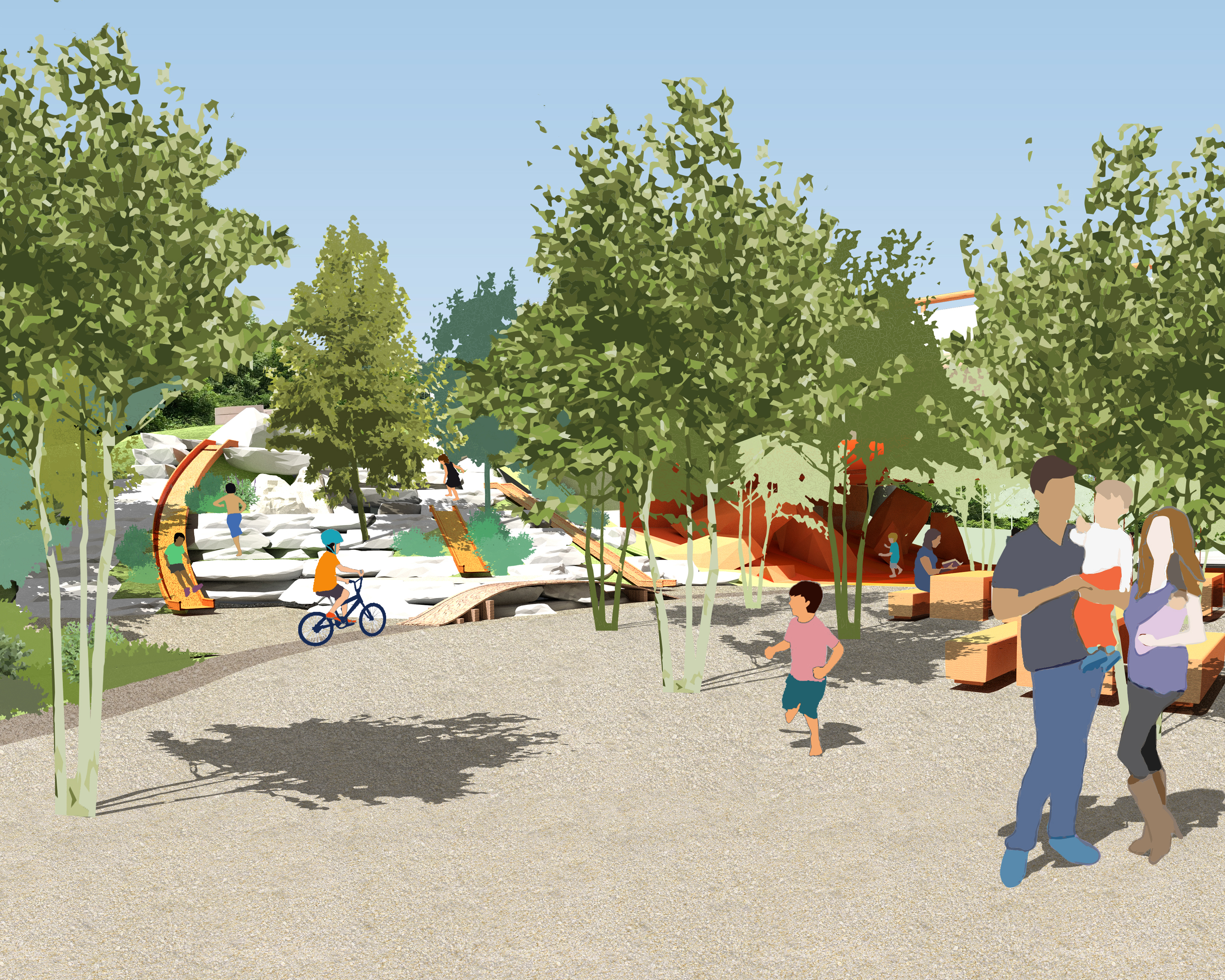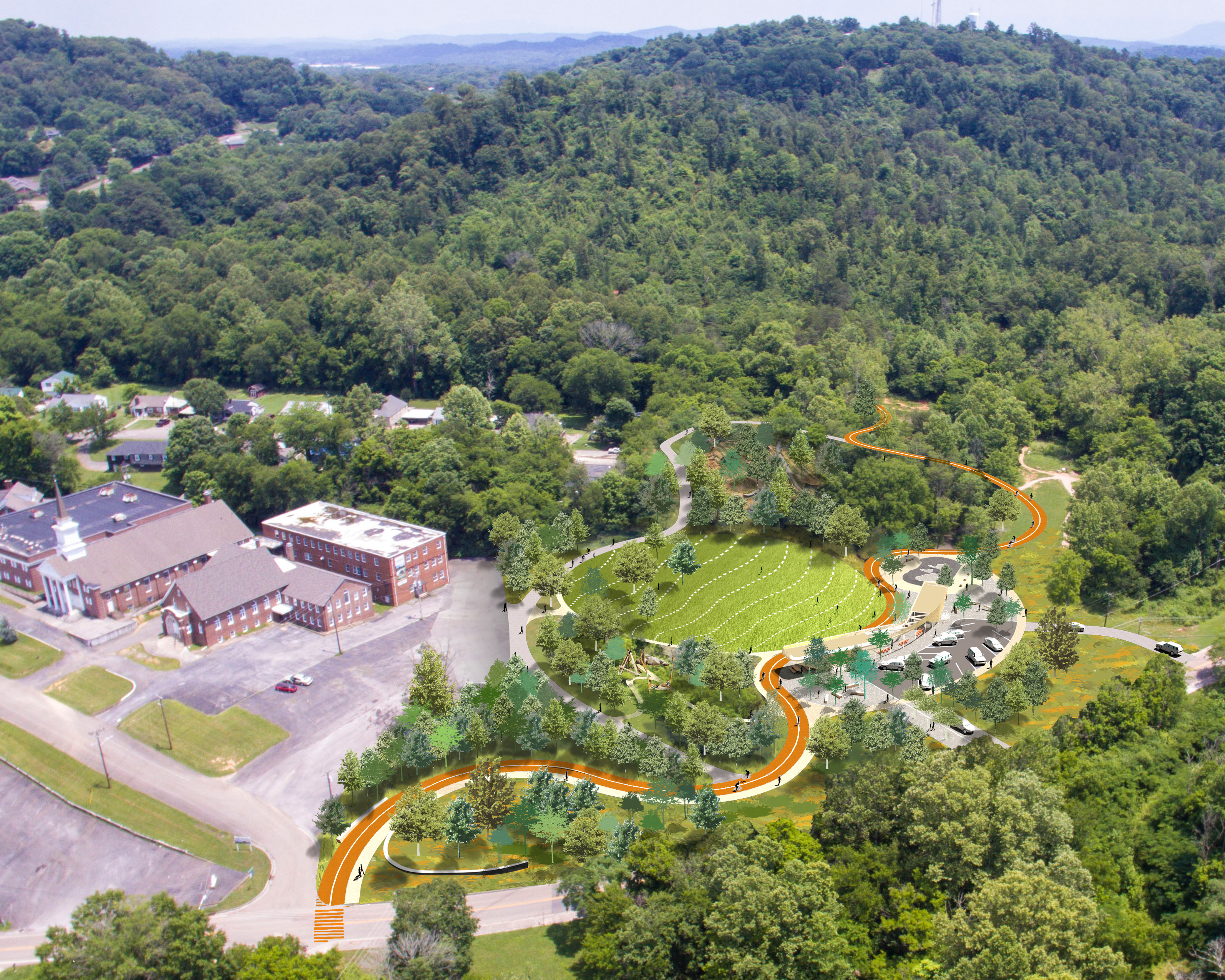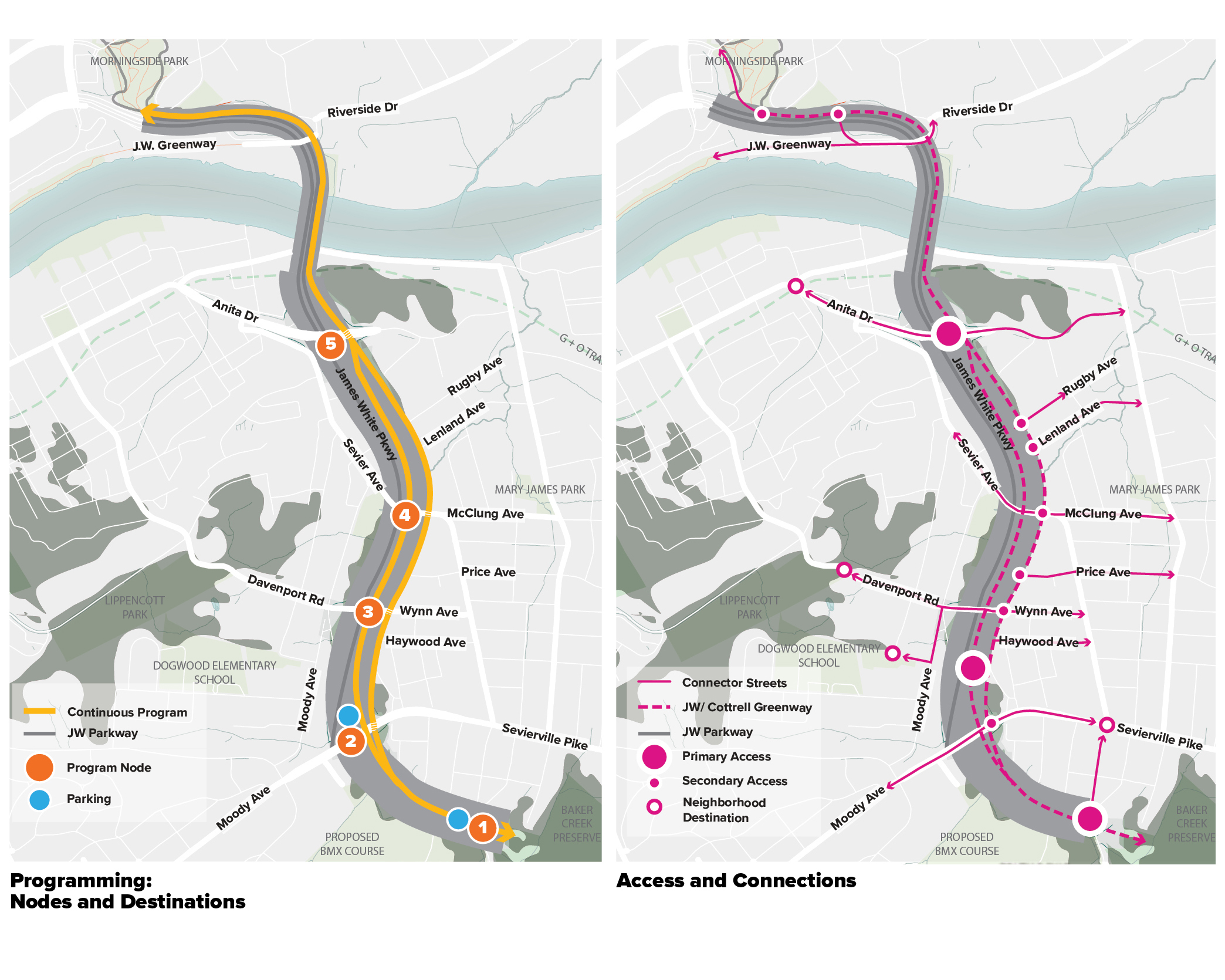Award
2018 Merit Award
Site
Knoxville, Tennessee
Client
City of Knoxville
Category
Planning and Analysis
Landscape Architects
Project Details
In the early 1980’s, the Tennesee Department of Transportation (TDOT) began construction of James White Parkway, a controlled access four-lane highway which bisected South Knoxville in order to link Downtown Knoxville to a broader highway network and series of destinations southeast of Knoxville including the Great Smoky Mountains National Park. The project was never completed and only a 2-mile portion of this seldom used four-lane highway exists today extending from Downtown Knoxville south across the Tennessee River where it terminates in a dead-end. In and around property long-age acquired for the highway’s completion, a series of outdoor recreation destinations began to develop which together has evolved over the last two decades to become Knoxville’s Urban Wilderness, one of the most popular an dynamic outdoor recreation destinations in the United States.
The Urban Wilderness is a spectacular 1000-acre outdoor adventure area that includes over 50 miles of trails and greenways, a nature center, lakes, historic sites, dramatic quarries, adventure playgrounds, five city parks, and a 500-acre wildlife area. It is composed of two major areas, the South Loop and the Battlefield Loop. Because of the Urban Wilderness’s expansive scale that grew organically over time, navigation and access is unclear and there is no primary entrance or connection between the two loops. The dead-end terminus of the incomplete James White Parkway was identified as an ideal site for an Urban Wilderness Gateway because of its accessible location and position between the Battlefield and South Loops. The terminus site was acquired by the City of Knoxville via an excess land transfer from the Tennessee Department of Transportation. However, during the planning process, the project team proposed extending the gateway along the full length of the Parkway in order to open up opportunities for increased public space, connectivity and ecological enhancements.
The Urban Wilderness Gateway Framework Plan envisions the entire James White Parkway as a 2.2 mile and 112-acre gateway to the Urban Wilderness. This spatial and processional experience extends and expands on the traditional concept of gateway and connects the Urban Wilderness to the heart of downtown Knoxville. The linear park culminates in the highway dead end and underpass bridge — an incredibly unique place with charismatic features. The terminus design approach unites the two worlds of the site – urban and wild – in order to create a strong, distinctive threshold that accentuates these differences and celebrates the underpass as a framing device and a place for play. Improvements at the Baker Creek Preserve Traihead create a more open and public entrance to the site’s famous mountain biking trails with a large sloped lawn, soft plaza gathering space, picnic pavilion, and parking.




